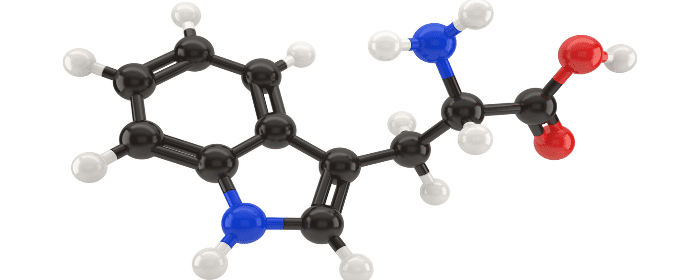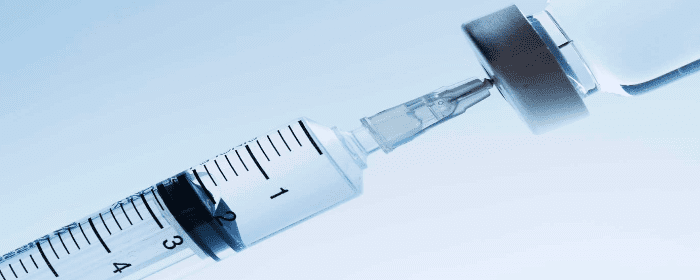
by admin | Apr 16, 2021 | Peptides, Neurodegenerative Diseases
Oligodendrocytes are key neural cells responsible for producing myelin sheaths that wrap around neuronal axons in the central nervous system[1]. Considering that thymosin β4’s (Tβ4) ability to promote neurological recovery in a range of neurological diseases has been well established, Chopp & Zhang (2015) propose oligodendrogenesis as the common link by which Tβ4 supports and promotes recovery after neural injury and neurodegenerative disease.
Citing Tβ4’s propensity to alter cellular expression and target multiple molecular pathways involved in neurovascular remodeling and oligodendrogenesis, it warrants further study into Tβ4 as a restorative/regenerative therapy for neurological injury and neurodegenerative diseases.
Traditional treatment of neurological diseases, including stroke, traumatic brain injury (TBI), and multiple sclerosis have typically focused on the reduction of lesions and produced no effective or beneficial long-term therapeutic outcomes. As a result, new proposals suggest renewed focus on therapeutic efforts designed to facilitate the restorative process present after injury and with specific focus on the enhancement of neurovascular recovery resulting in improved neurological recovery.
Among the many benefits of using Tβ4 in the restorative/regenerative therapeutic process is that, unlike neuroprotection treatments that must be introduced to damaged tissue before irreversible damage occurs, this treatment can be administered several days – even weeks – after injury and still stimulate the naturally-occurring regenerative process that has been demonstrated to be beneficial in treating several conditions, including stroke and TBI.
Specifically, Tβ4 promotes the remodeling and restoration of the CNS/PNS post-injury and has been shown to improve neurological recovery by allowing for improved neurovascular plasticity, neurite outgrowth, myelination of axons, as well as increasing the production and release of trophic factors to further support the remodeling of the nervous system.
Multiple animal models have demonstrated that Tβ4 facilitates the restorative neurological process by simulating oligodendrocytes (OLGs) and specifically OLG progenitor cells (OPCs) in the CNS. It appears that Tβ4 expedited multiple pathways of neurological recovery by stimulating tiny non-coding RNAs known as microRNAs to promote the generation, translation, and differential of OPCs and OLGs.
While these findings are promising, what remains yet unknown is specifically how Tβ4 affects, or perhaps more appropriately, influences, microRNAs to communicate specific neurological restorative and regenerative instructions among various cells. The predominant theory emerging from relevant research is that this process of intercellular communication is created and moderated by tiny lipid particles known as exosomes.
Considering the safety of Tβ4 for use in human trials and the potential for Tβ4 to treat neurological injury and degeneration, future clinical trials focusing on Tβ4’s specific influence on exosomes, and as a therapeutic restorative for neurological treatment and regeneration, is thought to hold promising clinical translation for future treatments of neurological disease and injury.
Source: (2015, January 22). Thymosin β4 as a restorative/regenerative therapy for …. Retrieved January 5, 2021, from https://www.tandfonline.com/doi/full/10.1517/14712598.2015.1005596
[1] (2015, October 15). Neuroinflammatory modulators of oligodendrogenesis. Retrieved January 2, 2021, from https://nnjournal.net/article/view/1129

by admin | Mar 26, 2021 | Peptides, Traumatic Brain Injury
With nearly 1.5 million traumatic brain injuries (TBI) occurring each year in the United States and over 69 million more cases of TBI[1] occurring worldwide, TBI continues to be one of the leading annual causes of mortality and morbidity. Carrying with it an annual estimated cost exceeding $56 billion, there has yet to be a viable, effective treatment option for TBI.
As researchers continue to search for an effective pharmacological-based treatment for TBI, recent preclinical studies have found endogenous neurorestoration occurring after TBI. Treatments developed in an effort to improve and/or promote the post-TBI neurorestorative recovery process have also shown to be promising.
Of the potential regenerative peptides identified as part of the TBI recovery efforts, thymosin beta 4 (Tβ4) has been found to exhibit several interesting and promising benefits, including pro-survival and pro-angiogenic properties, protecting tissue against damage, and promoting tissue regeneration.
In addition, previous studies exploring Tβ4 as a potential TBI-treatment option have demonstrated reduced inflammation, improved remyelination, and improved recovery in animal models studying such effects. As a result, the authors of this brief conclude that these observed benefits indicate Tβ4 to hold tremendous potential as a treatment option for TBI.
Since there isn’t one established animal model that can clinically reproduce the significant and multi-layered deficits in cognitive and motor performance experienced as a result of TBI in humans, most TBI studies rely on the controlled cortical impact, or CCI, model to evaluate the efficacy of potential TBI treatments.
Early Tβ4 Treatment May Reduce Cortical lesion Volume and Improve Functional Recovery After TBI
Using the CCI model to evaluate the efficacy of early Tβ4 treatment on spatial learning and sensorimotor functional recovery in rats, the authors demonstrated that rats receiving (Tβ4) treatments 6, 24, and 48-hours after TBI demonstrated significant improvements, especially when compared to rats treated with a vehicle control (in this case, saline). Rats in the Tβ4-treated group also demonstrated reduced hippocampal cell loss and reduced cortical lesion volume at a rate of up to 30%.
As a result of these findings, the authors suggest Tβ4 may encourage neuroprotection even when treatment is provided up to 6-hours after the occurrence of a TBI.
Tβ4 Treatment Provided 24-Hours After TBI Injury May Improve Functional Recovery, But Not Alter Cortical Lesion Volume
The primary intent of any neuroprotective TBI treatment is to reduce the size of established lesion(s). Researchers note that a major, but recurring, limitation of TBI-based treatments is the short timeframe between injury and need for treatment. As such, researchers point out that most preclinical TBI studies found the treatment to be effective only when administered within several hours after experiencing a TBI.
However, when using the CCI model, researchers noted the ability to improve neurological recovery without altering cortical lesion volume; these improvements were observed even when administering Tβ4 treatment more than 24-hours after injury.
Specifically, rats receiving Tβ4 treatment initiated 24 hours post-injury demonstrated significantly reduced cell loss as well as improvement in spatial learning and sensorimotor functional recovery when compared to TBI rats receiving saline treatments.
Tβ4 Treatment Provided 24-Hours After TBI Injury May Promote Neurogenesis
Substantial evidence has repeatedly indicated that all mammals, including humans, have the ability to generate new neurons. Specifically, these neurons originate from neural stem cells in the adult brain and appear to replace neurons that die regularly and in specific areas of the brain.
Considering this information, scientists introduced bromodeoxyuridine (BrdU), a thymidine analogue, into the DNA of dividing cells with the goal of improving neurogenesis. When compared to sham controls, this process demonstrated a significant increase in the presence of BrdU-positive cells 35 days after TBI.
Additionally, Tβ4 treatment appeared to further increase the number of BrdU-positive cells when compared to saline controls. These findings were further supported by the authors’ data confirming neurogenesis increases in TBI rats receiving Tβ4 treatment. The authors suggest that these findings indicate Tβ4 treatment promotes new cells to differentiate into brain-specific neurons.
Tβ4 Treatment Provided 24-Hours After TBI Injury May Promote Angiogenesis
Research demonstrates normal adult brains contain a stable vascular system; however, the vascular system becomes active in response to several pathological conditions, one of them being TBI. Findings indicate that Tβ4 treatment applied to specific areas of the brain associated with TBI, including the cortex, demonstrate significant increases in the observed vascular density of these specific areas, especially when compared to a control group receiving a saline treatment.
The presence of increased vascular density in these areas of the brain is thought to be closely related to improved recovery from TBI and specifically enhanced neurogenesis and synaptogenesis. As a result, the authors of this brief suggest further study to attain a better understanding of neurovascular molecular mechanisms with a specific focus on developing angiogenic and neurogenic therapies for TBIs.
Considering the above findings pertaining to the potential benefits of Tβ4 treatment for TBI and the fact that administration of Tβ4 has proven safe and well-tolerated in both animals and humans, the authors call for further investigation of molecular mechanisms that contribute to enhanced Tβ4-mediated neuroprotection and neurorestoration.
Source: (n.d.). Neuroprotective and neurorestorative effects of Thymosin beta 4 …. Retrieved February 4, 2021, from https://www.ncbi.nlm.nih.gov/pmc/articles/PMC3547647/
[1] “Estimating the global incidence of traumatic brain injury – PubMed.” 1 Apr. 2018, https://pubmed.ncbi.nlm.nih.gov/29701556/.

by admin | Jul 6, 2020 | Peptides
Multiple sclerosis is a challenging disease for patients, caregivers, and physicians. MS takes function away from patients, causing them to lose the ability to walk, to feel, or to see. The symptoms of MS vary from patient to patient. In fact, the symptoms of multiple sclerosis can even change in the same patient over time. Wherever MS destroys covering on nerve cells, there are the symptoms of the disease. These functional deficits are challenging for caregivers who provide support for patients. MS is also challenging for physicians because it is a difficult disease to treat.
Several disease-modifying treatments have been released over the past decade that has changed the course of MS for some patients. None is a cure. As such, researchers are continually looking for new treatments for multiple sclerosis.
One of the more promising potential MS treatments is thymosin beta 4. Thymosin beta 4 is a small protein (i.e. peptide) that the body produces naturally. When the protein is injected into animals, it produces regenerative and restorative benefits such as improved wound repair and blood vessel and nerve regeneration.
When scientists want to test new treatments for MS, they often use a model of the disease called experimental autoimmune encephalomyelitis (EAE). When researchers cause EAE in mice, it causes the mice to experience symptoms and changes that are quite similar to MS in humans. Once mice are given EAE, scientists can then see if a particular treatment can make the mice better.
This is precisely what Dr. Zhang and co-researchers accomplished; they caused experimental MS in mice and treated them with either thymosin beta 4 or placebo (saline) injections. Mice began recovering from EAE as early as 11 days after treatment with thymosin beta 4. Thymosin beta 4 treatment reduced the severity of experimental MS in mice by about half compared to those who received a placebo. The statistically significant benefit lasted at least 30 days after thymosin beta 4 treatment.
The researchers performed additional experiments to determine how thymosin beta 4 improved function in mice with EAE. Based on experiments in mouse nerve cells, thymosin beta 4 appears to reduce inflammation and increase oligodendrogenesis, which is the growth of new cells the replace the covering on nerves.
While this work was performed on mice and will need to be confirmed in humans, it is an exciting lead in the development of new therapies for MS. Since thymosin beta 4 appears to be safe, this small protein may one day be among the disease-modifying treatments for MS.
Reference: Zhang, J., et al. (2009). Neurological Functional Recovery After Thymosin Beta4 Treatment in Mice with Experimental Auto Encephalomyelitis. Neuroscience. 2009 Dec 29; 164(4): 1887-1893.




 St. Petersburg, Florida
St. Petersburg, Florida
